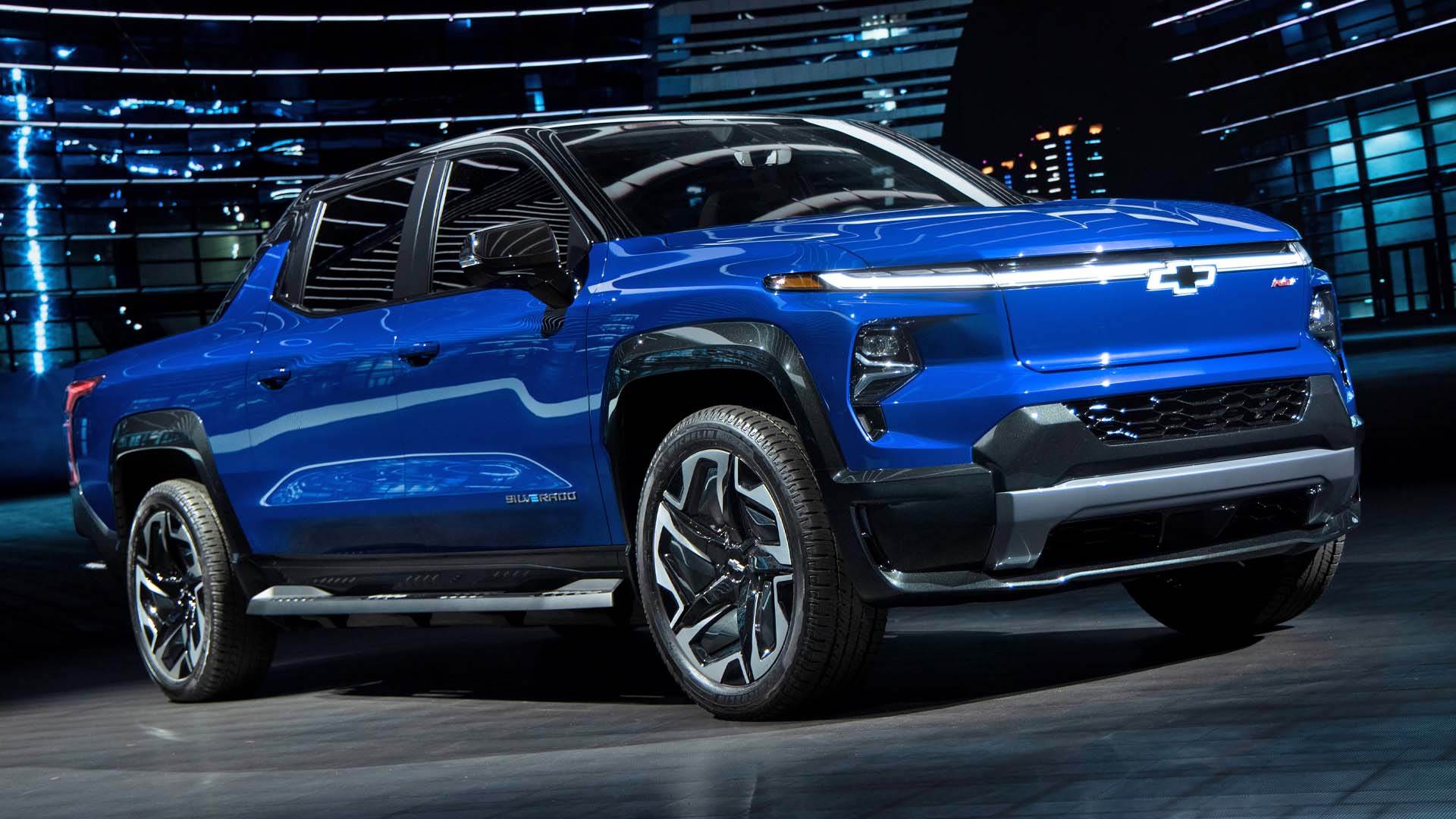

General Motors is building Silverado EVs. It delivered a whole 18 of them during the third quarter of this year. It planned to expand production beyond its Detroit-Hamtramck facility, also known as “Factory Zero”, by 2024 to Orion Assembly where the Bolt EV is built, albeit not for much longer. That plan has now been pushed back to late 2025, and according to GM, the decision was not made due to any supply shortages, or even the ongoing United Auto Workers strike. It could be indicative of waning consumer enthusiasm for fully electric vehicles as a whole.
The automaker cited “evolving EV demand” and engineering improvements to the vehicle as causes for the delay. In a further statement to the Detroit Free Press, a spokesperson for the automaker expressed that “the trendline for EVs is stabilizing,” going further to explain that demand is “not rising as fast as originally forecasted.” That’s bad news for an automaker that plans to completely electrify its lineup by 2035. Of course, it’s far from the only car company with such goals.

There are plenty of ways to slice this pie, but any arguments pertaining to a lack of component supply are gradually growing thin. GM is producing more and more GMC Hummer EVs, Cadillac Lyriqs, and other electric models. It’s even begun making its own battery cells at scale in Ohio, although there have been some considerable hiccups on site. The bottom line seems to be that the automaker believed it could sell a ton of electric cars and trucks, but it was too ambitious.
To be clear, Factory Zero alone is capable of producing as many as one million cars per year, if you believe the automaker’s claims. GM also says that it will have the capacity to profitably sell one million EVs by 2025.
Both assertions carry a lot of contextual baggage. Yes, Factory Zero could produce a million cars a year, but it’s not just building the Silverado EV. It’s currently also tasked with assembling the Hummer EV pickup and SUV, as well as the Cruise Origin autonomous shuttle. Cruise is having enough trouble with its Bolt-based autonomous taxis, and we don’t yet know when the steering wheel-free shuttles will begin driving themselves out of the factory in earnest. Likewise, the Hummer EV suffered a very rocky start to production, with whole battery pack replacements necessary for a number of early production vehicles. It was only in Q3 that manufacturing of the truck ramped up in considerable numbers. Even then, we’re talking thousands of trucks being built, not tens of thousands.

The bottom line is that more or less every vehicle on GM’s Ultium platform, save perhaps the ultra-luxurious Cadillac Celestiq, has been rushed into production to address what the automaker perceived to be massive demand for electric vehicles. The scramble to get the Lyriq out is a prime example of this. As a result, many of the first SUVs that reached customers had a variety of both trivial and/or serious issues, as the Detroit Free Press reported around the start of the year. These problems have a strong influence on the initial production ramp, and to make matters worse, demand isn’t figuring to be as rosy as GM projected. The result is a Q3 sales sheet that reads 18 Silverado EVs and 19 Blazer EVs. GM can make them, sure, but it’s just not that simple.
It must be said that the industry-wide switch to NACS also can’t have helped EV demand and may play a part in these delays. It’s plausible that consumers will wait until they can buy EVs that can natively use Tesla’s Supercharger network. In the meantime, most automakers aren’t building cars that can. For now, they’re still churning out vehicles with CCS ports, which are seemingly doomed on this side of the pond.
It all comes back to the fact that the era of the early EV adopter is over. Those customers enthusiastic enough to purchase EVs despite their shortcomings largely have already. Now, legacy automakers are forced to reckon with mainstream car buyers, who tend to define EVs by their faults: poor charging infrastructure, poor cold weather performance, and high cost. Range is a problem, sure, but that’s mostly a symptom of a lack of dependable charging. If infrastructure was better, people wouldn’t worry about covering the longest distance on a full battery.
GM is leading the electrification charge among American automakers, at least in terms of the sheer quantity of models it plans to produce. But if it can’t sell an electric pickup truck, it’s unlikely that other cars, even hot SUVs and crossovers, will be smash hits, either. We can look to the new Chevy Trax to see that demand for cheap gas-powered cars is still very high. This could be a wake-up call.
Got a tip? Email us at tips@thedrive.com